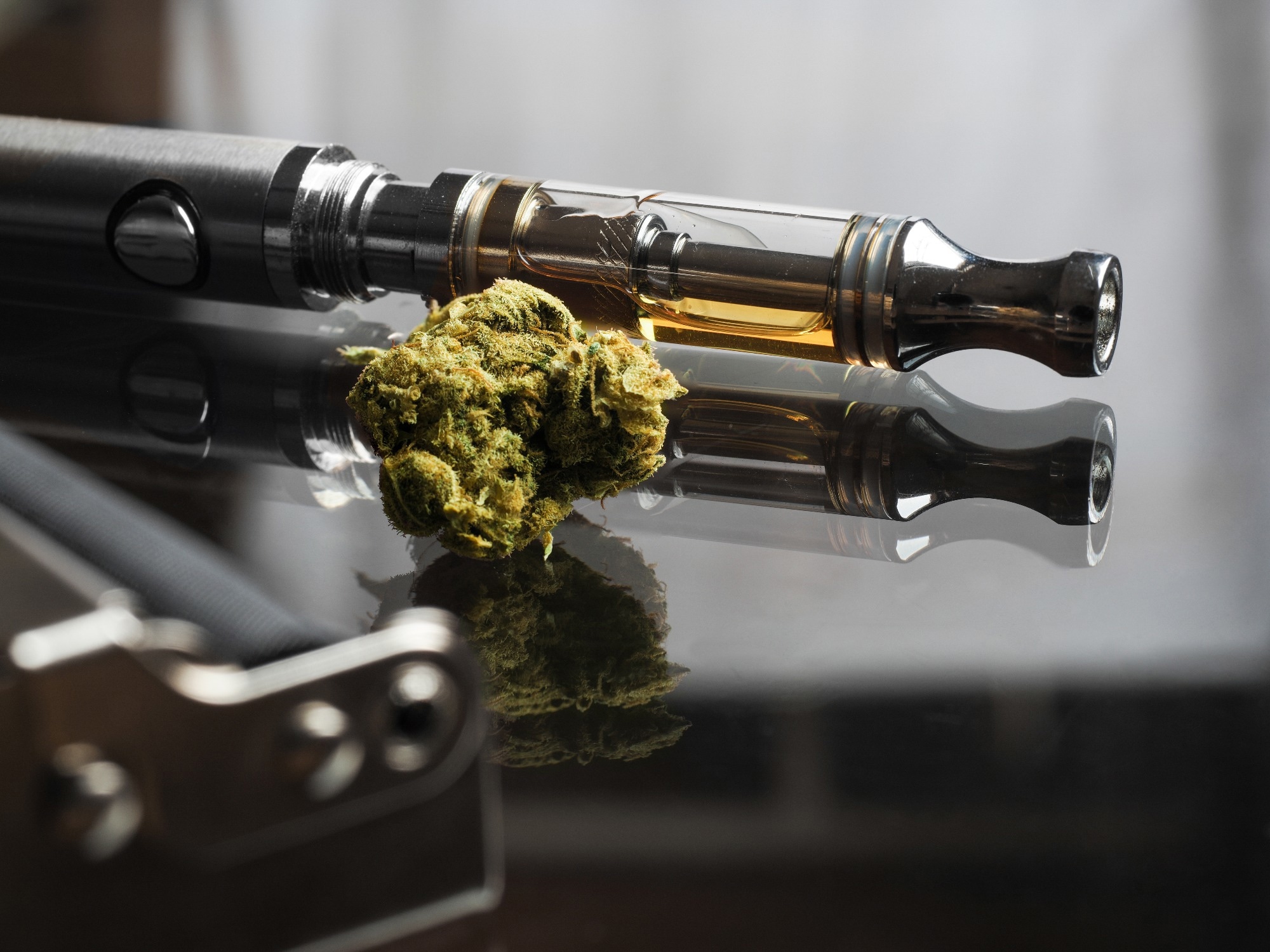Researchers reveal that German youth who smoke or vape are hundreds of times more likely to try cannabis, highlighting the need for early, targeted prevention in schools.
 Study: Association of cigarette and e-cigarette use with cannabis-related risk perceptions and intentions. Image credit: KG Design/Shutterstock.com
Study: Association of cigarette and e-cigarette use with cannabis-related risk perceptions and intentions. Image credit: KG Design/Shutterstock.com
A recent study published in Journal of Cannabis Research investigated the associations between current tobacco use, cannabis risk perception, and intention to use cannabis within the next year among German youth.
Current status of cannabis in Germany
In April 2024, the German government partially legalized the recreational use of cannabis. In the last decade, the European Monitoring Centre for Drugs and Drug Addiction has recorded an increasing prevalence of cannabis use, especially among young people. In 2021, 7.6% of adolescents and 25.0% of young adults used cannabis, compared to 4.6% and 13.5% in 2011.
Recent studies have established a relationship between cannabis use and combustible cigarettes and e-cigarette use. According to a 2024 report, German adolescents and adults who were cigarette and e-cigarette users were significantly more likely to use cannabis compared to non-users of each product. Approximately 83% of cannabis users smoked cannabis together with tobacco.
Scientists have different ideas about the causality of the association between cannabis and cigarette/e-cigarette use. The gateway theory assumes that the use of combustible/e-cigarettes serves as a gateway to the later use of cannabis. Multiple studies have supported this hypothesis by indicating that younger adults who used combustible/e-cigarettes were at higher risk of using cannabis later. The reverse gateway theory and shared genetic or environmental predispositions are other proposed association theories.
Multiple studies have shown that early, frequent, and heavy cannabis users are at a high risk of poor psychiatric and cognitive outcomes. In addition, these people are at an elevated risk of developing cardiovascular and respiratory diseases. Co-use of tobacco and cannabis has also been associated with the above-mentioned health risks and more.
Youth’s perception of cannabis risk
Over the last decade, adolescents’ perception of cannabis being harmful has decreased. The motivational hypothesis correlated a reduction in risk perception with increases in cannabis use, while the risk reappraisal hypothesis correlated positive cannabis use experiences with less perceived risk.
Many countries, including Uruguay, Canada, and several American states, have legalized the sale, possession, and use of cannabis for recreational purposes. Countries that partially legalized cannabis use, like Germany, aim to protect young people from its harmful effects via systematic education and prevention. It is crucial to identify and assess the risk factors for cannabis use to address them properly. Tobacco users and those with a perception that cannabis is harmless are at a high risk of adverse health effects.
About the study
The current study hypothesized that compared to never-cannabis users, current cigarette or e-cigarette users perceive a lower risk of cannabis use and develop a higher intention to use cannabis. The intention to use cannabis was assumed to be negatively associated with risk perception.
This study collected data from two ongoing trials examining the impact of school-based cannabis prevention programs. The current study recruited students from grades 8 and 9 from 1,615 schools in Germany. After exclusions, the analytic sample consisted of 6,711 participants.
The baseline data linked to sociodemographic characteristics, combustible cigarette and e-cigarette use, patterns of cannabis, risk perception of cannabis use, and intention to use cannabis were collected through questionnaires between autumn 2021 and spring 2022.
Study findings
The current study assessed a large sample of young German adolescents between 13 and 16. The study cohort consisted of a total of 6,320 participants who never used cannabis, 391 current cannabis users, 5,573 participants who either never used combustible or e-cigarettes, 387 e-cigarette users, 317 current combustible cigarette users, and 434 current dual users.
Overall, a significant association between current combustible/e-cigarette and cannabis use was established in this study.
Current e-cigarette users were 42.8 times more likely to use cannabis compared to never users. Adjusted odds ratios showed that current combustible cigarette users were 185.9 times more likely, and current dual users were 468.7 times more likely.
Regression and post-hoc models indicated that differences in cannabis risk perception were significantly associated with current combustible/e-cigarette use. The model accounted for 4.5% of the variance in risk perception.
Dual users perceived the lowest risk, followed by combustible cigarette users and e-cigarette users. Unsurprisingly, neither combustible nor e-cigarette users perceived the highest risk of cannabis use.
Differences in intention to use cannabis were robustly associated with current combustible/e-cigarette use. Dual users of combustible and e-cigarettes exhibited the strongest intention of using cannabis, followed by combustible cigarette users and e-cigarette users.
The current study indicated that the perceived harm of cannabis was negatively correlated with intention to use cannabis among never-users. The intention-to-use model explained 22.5% of the variance. This suggests that additional factors beyond tobacco use and risk perception likely contribute to cannabis use intention.
It is important to note that this was a cross-sectional study, so no conclusions can be drawn about the causality of these associations.
Conclusions
The current study observed that cannabis use was strongly associated with various factors, including the use of combustible cigarettes and e-cigarettes, perceived harm of cannabis use, and intention of using cannabis in the immediate future.
However, the study's findings are limited by its reliance on self-reported data, possible unmeasured confounders such as mental health and parenting style, and its failure to include all possible variables as controls.
The findings highlight that prevention and intervention programs should address the co-use of cannabis and tobacco products together rather than focusing solely on cannabis use.
Therefore, it is important to develop prevention programs for adolescents at an early stage in school, addressing the effects of using cannabis independently or co-using it with combustible/e-cigarette products.
Download your PDF copy now!